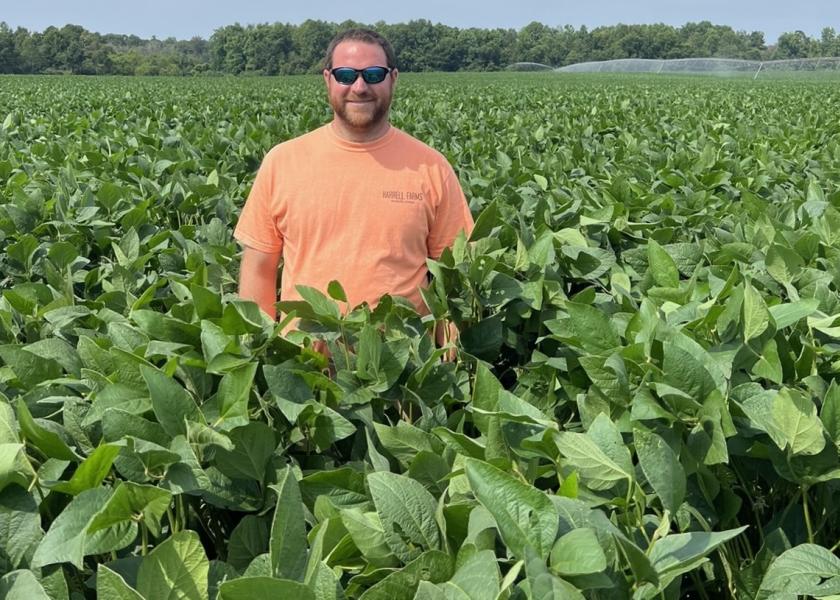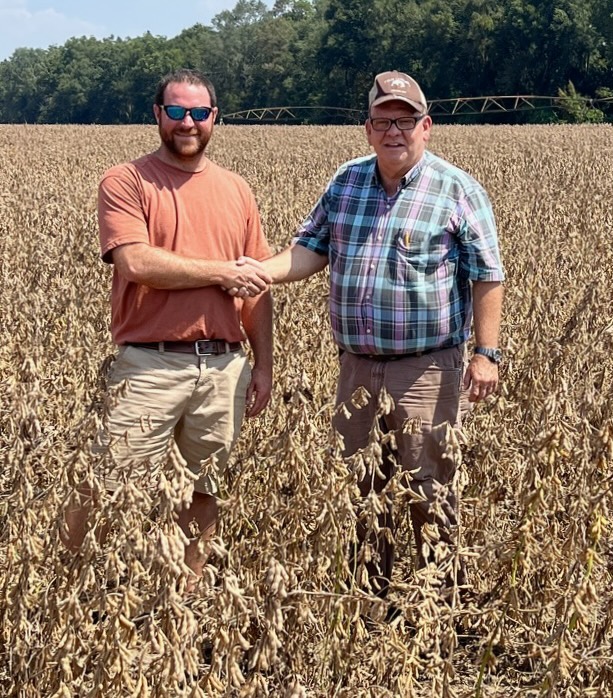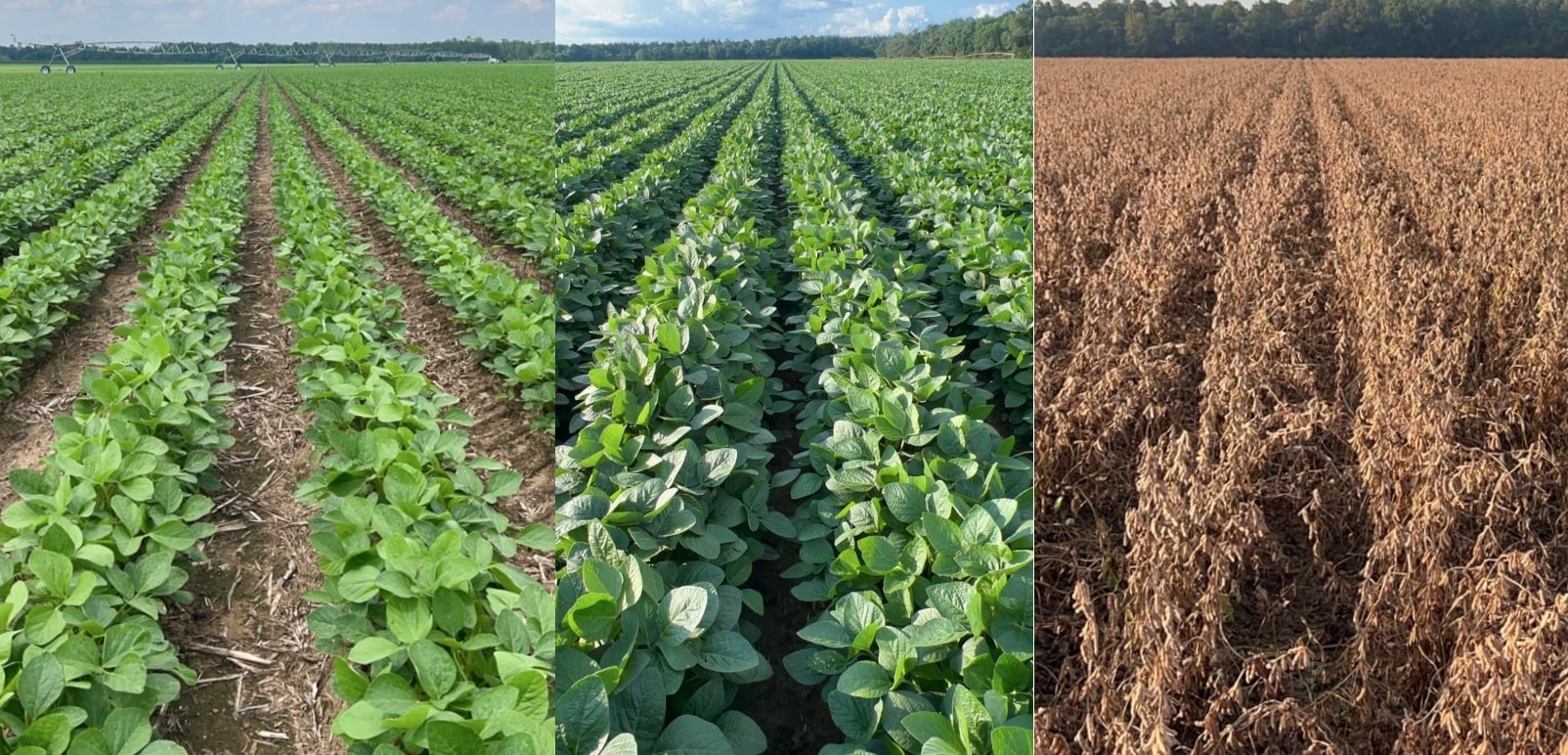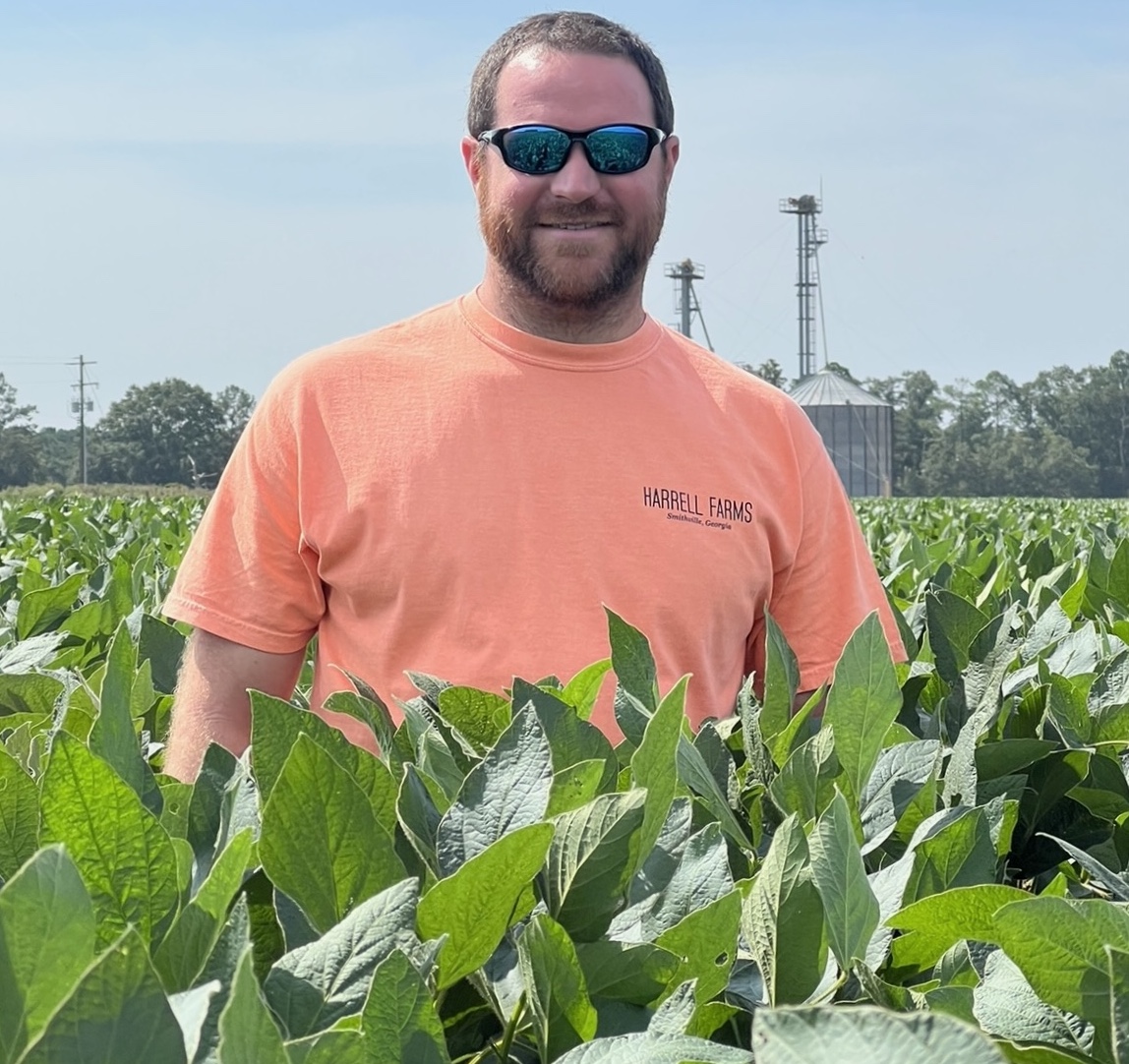Young Farmer Breaks Soybean World Record With Stunning 206-Bushel Yield

Soybean yields just went nuclear — 206.7997 bushels per acre.
And what do world record 206-bushel soybeans look like? Ask Alex Harrell.
The southwest Georgia farmer grew the highest yielding soybeans in history, hitting 206.7997 bushels per acre on Aug. 23. Harrell’s stunning total shatters the previous world record of 190.23 bushels per acre grown in 2019 by fellow Georgian, Randy Dowdy.
“It was surreal sitting in that cab watching the yield monitor,” Harrell explains. “Long story short, this comes down to late-season management.”
Pushing to the End
On 3,000 acres in Lee County, Harrell, 33, grows corn, soybeans, watermelons, and wheat. In 2023, out of the gate in the Georgia Soybean Production Contest, Harrell determined to push hard on a flat, 60-acre field of red loam watered by a center pivot. (In 2022, the field was in corn, and over the 2022-23 winter, it was covered in a cereal mix of oats, rye, and triticale.)

On a particular 10 acres within the 60, Harrell went full throttle. “I cherry-picked a spot with a yield goal of 200. I wanted to push, push, and push on that spot and see what was possible.”
Prior to planting, he applied variable rate lime, along with gypsum to build calcium levels. However, Harrell also put out chicken litter—a fertilizer typically applied to corn on his operation.
On April 5, after treating seed with Brandt SeedZone Zn, Harrell planted a maturity group IV soybean—Asgrow 48X9 in a single-row configuration with 30” spacing, backed with biologicals from Hefty Seed Company. “I strip-tilled into the cover crop and planted at a population of 85,000.”
However, a packing rain gave Harrell serious doubts. “The rain knocked us back to a count of 77,000. I was thinking afterwards that the crop wouldn’t be special, but I was still intent on pushing to the end and never giving up.”
In the Cards?
Sticking to clockwork, Harrell tissue sampled each Monday—never missing a single week. “We used the tests to be certain we only applied according to the results and never shot in the dark. We then either foliar fed, Y-drop fed, or injected through irrigation.”

Almost all foliar products applied by Harrell were Brandt-based. “We also used a lot of PGRs—both sprayed and in-furrow from Loveland and ROI Biologicals. Also, we put on humic acid from ROI Biologicals, along with a sugar product and a fulvic acid from TEVA.”
The crop got whatever the crop needed, according to Harrell. “We watered steadily until the beans were mature. That meant watering until we had membrane separation on the top two nodes.”
At what point in the season did Harrell suspect he had a world record crop? He did not dare. Rather, by July, Harrell wondered if a second-place finish was in the cards. “I was skeptical and I didn’t think my beans were going to break any records. I knew the beans might triple the national average (roughly 50 bpa in 2022), or even go much higher, but I genuinely thought they might come in about 175—higher than Kip Culler’s 161, but lower than Randy Dowdy’s 191.”
However, Harrell’s pickup tailgate told a different story.
Explosion
Prior to harvest, Harrell observed phenomenal bean size in the rows. Outrageous girth. “On average, it takes 2,500 to 3,000 soybeans to make a pound, but we were in the 1,650 to 1,700 range. It’s not like I had three times as many pods as anyone else, so although the field looked great, you couldn’t tell much about yield beyond that.”

However, the pod count was still remarkable, Harrell continues: “We did have 5-bean pods that we’d never seen before. Also, for the first time in my life, we had more 4-bean pods than 2-bean pods. When we’d shuck off pods on the tailgate, the 3-pod pile was always the biggest. Usually, you’ll have a few 4-bean pods and a lot of 2-beans pods, but this year when I saw more 4’s than 2’s, I knew we onto something good. I just didn’t realize how good.”
On Aug. 11, Harrell dessicated and cut 12 days later into an explosion of yield.
Respect
With a University of Georgia Extension agent riding shotgun on Aug. 23, Harrell watched the biggest numbers of his life—or anyone else’s—flash across his yield monitor. “It was incredible. I knew it was a good crop and the rest of the field came in at about 100 bushels, but this spot was unbelievable. Then we weighed, scaled, and it was double-checked and verified at the University of Georgia.”
World record. The highest soybean yield in the history of agriculture: 206.7997 bushels per acre.

What did Harrell do after breaking the soybean record? Pay respect.
“I tried to call my friend, Randy Dowdy, but he was in the middle of surgery. I told myself earlier in the year that if I was to somehow break the record, I’d call Randy first. Randy has helped me so much along the way and I could never have done this without him. I’m in Total Acre, which was started by Randy and David Hula, and both guys have been so good to me. Randy opened my eyes as to what is possible and if he hadn’t have set his record, I’d have had nothing to chase.”
In conclusion, how does Harrell summarize his record-shattering 2023 soybeans?
“The yield came down to test weight and that comes down to late season management,” he adds. “Some guys make a mistake by giving up on beans too early, in my opinion. Again, I truly believe our extra weight and bean size were due to getting it right on late-season management.”
For more from Chris Bennett (cbennett@farmjournal.com 662-592-1106) see:
Priceless Pistol Found After Decades Lost in Farmhouse Attic
Cottonmouth Farmer: The Insane Tale of a Buck-Wild Scheme to Corner the Snake Venom Market
Tractorcade: How an Epic Convoy and Legendary Farmer Army Shook Washington, D.C.
Bagging the Tomato King: The Insane Hunt for Agriculture’s Wildest Con Man
Young Farmer uses YouTube and Video Games to Buy $1.8M Land
While America Slept, China Stole the Farm
Bizarre Mystery of Mummified Coon Dog Solved After 40 Years
The Arrowhead whisperer: Stunning Indian Artifact Collection Found on Farmland
Fleecing the Farm: How a Fake Crop Fueled a Bizarre $25 Million Ag Scam
Skeleton In the Walls: Mysterious Arkansas Farmhouse Hides Civil War History
US Farming Loses the King of Combines
Ghost in the House: A Forgotten American Farming Tragedy
Rat Hunting with the Dogs of War, Farming's Greatest Show on Legs
Evil Grain: The Wild Tale of History’s Biggest Crop Insurance Scam







